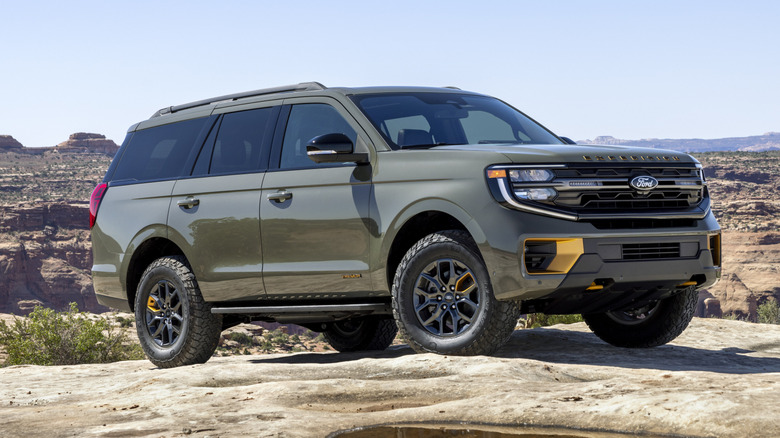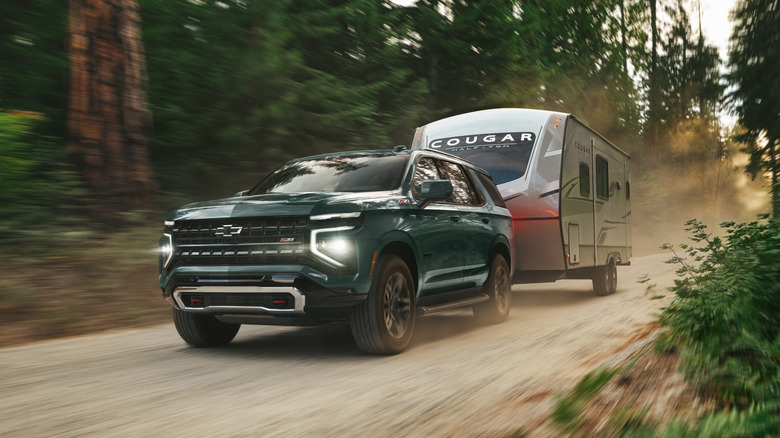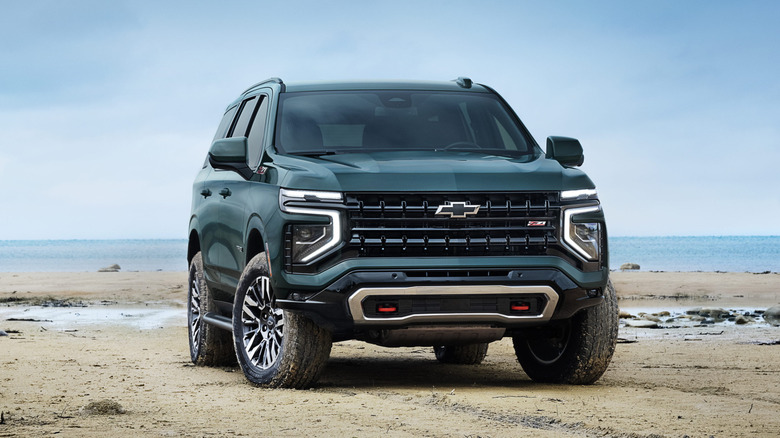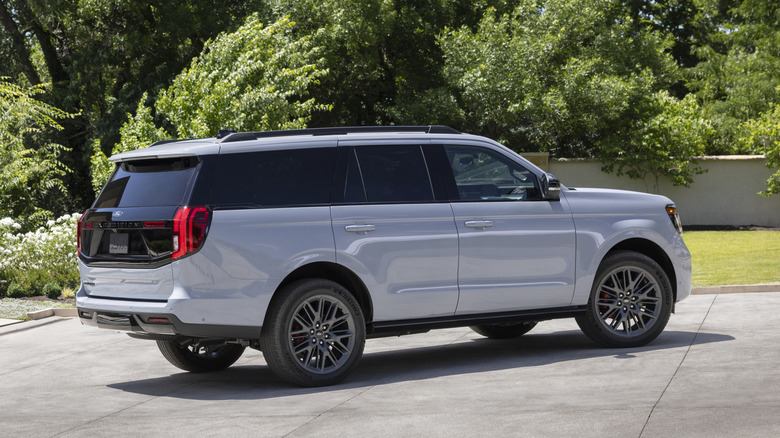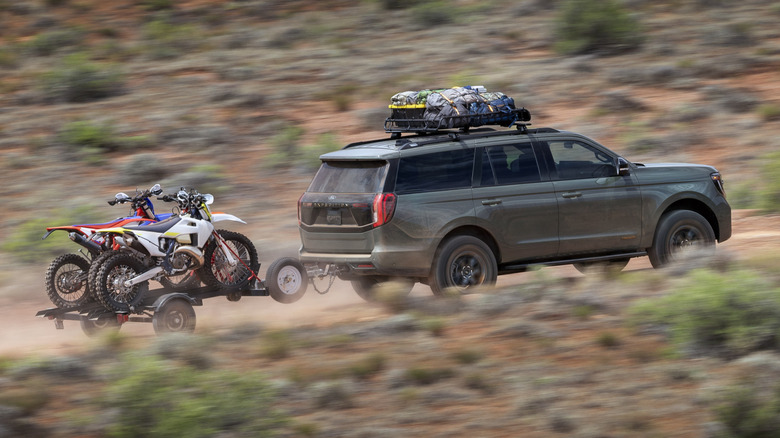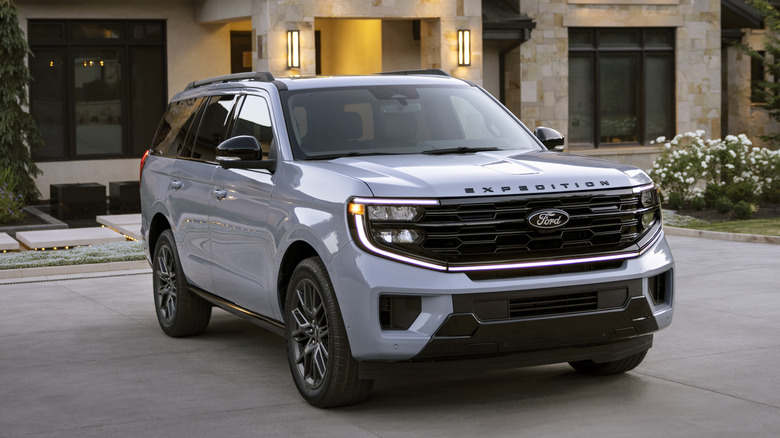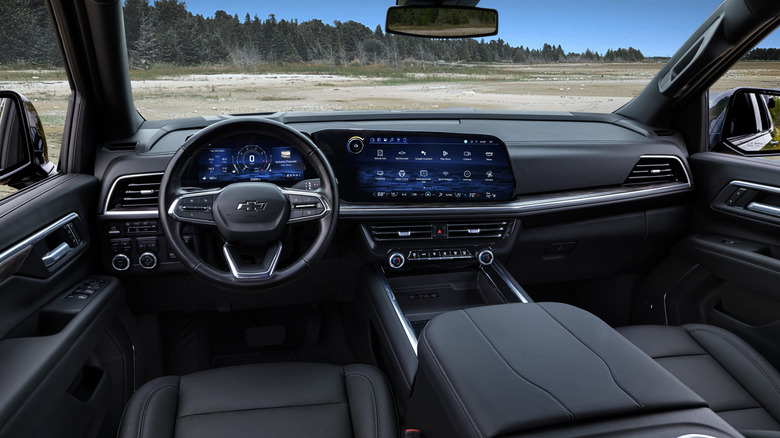Ford Expedition Vs. Chevrolet Tahoe: 3-Row SUVs, Compared
Family vehicles like the Ford Expedition and the Chevrolet Tahoe offer maximum seating and maximum towing capacity. They are both truck-based SUVs with sturdy pickup-truck-based underpinnings. They both offer three rows of seating and nearly as much capability as their pickup truck brethren. Want something big enough for your growing family that can also pull the boat on your summer vacation? These two are a great place to start.
Both the 2025 Ford Expedition and the 2025 Chevrolet Tahoe have been significantly updated for 2025 with long lists of standard features, changes to exterior looks, and impressive performance stats. But which of these two family haulers is best for your needs? Which one is more efficient? Which family hauler will offer you better towing power when you need to bring your trailer along? And which one has the most space for those chronically-overpacking family members of yours? Let's take a closer look and see how these two stack up.
Pricing for the big family SUVs
With all the capability offered by these two big three-row SUVs, their price tags aren't small. The new 2025 Tahoe starts at $60,495 (including a $1,995 destination fee) for a base LS model with rear-wheel drive. The LS comes with Chevy's stout 5.3-liter V8 and a decent list of standard features like smartphone connectivity and a six-speaker stereo, but it's not exactly plush. It has cloth upholstery, manually-adjusting second- and third-row seats, and a manually-adjustable steering column. Top-of-the-line models like the Tahoe High Country add a long list of luxury features like the upgraded 6.2-liter V8, magnetic ride control suspension, and a Bose 10-speaker stereo, but you'll pay the cost to be the boss. MSRP for a rear-drive Tahoe High Country is $78,695 before adding any options.
With the Expedition, things are pretty similar. The base model, which Ford calls the Expedition Active, starts at $63,695 (including a $1,995 destination fee). It also has cloth upholstery, rear-wheel drive, a six-speaker stereo, and the base engine – Ford's standard turbocharged 3.5-liter V6. At the top of the Expedition's trim-level ladder there's the King Ranch trim which is a strong competitor for the Tahoe High Country, but it makes a big price jump. It has an MSRP of $85,650 (including destination), and for that price you get all sorts of added equipment like premium leather upholstery, a 22-speaker B&O stereo, and BlueCruise hands-free driver's aids.
How much power do they offer?
As mentioned, the Chevrolet Tahoe is available with multiple engines. The first is a 5.3-liter V8 – a mainstay in Chevy's truck lineup. It produces 355 hp and 383 lb-ft of torque and it's standard on most of the Tahoe's trims: LS, LT, RST, Z71 and Premier. If you want more power, a 6.2-liter V8 is also available. It produces 420 hp and 460 lb-ft and it's standard on the High Country trim level. It's also available on the RST, Z71, and Premier trims. Chevy also offers a Duramax diesel powertrain for the Tahoe — a turbocharged 3.0-liter inline-six cylinder that makes 305 hp and 495 lb-ft. All three engines are available with rear-wheel drive or four-wheel drive and all three engines are paired with a 10-speed automatic transmission.
The new 2025 Ford Expedition is a bit simpler when it comes to available powertrains. Every trim level of the Expedition comes with Ford's EcoBoost V6. Some shippers might complain about the lack of an available V8, but the turbocharged 3.5-liter V6 puts out 400 hp and 480 lb-ft on the Active, King Ranch, and Platinum trim levels — more than Chevy's base V8. A High-Output version of Ford's turbocharged V6 engine bumps things up to 440 hp and 510 lb-ft. The High-Output engine standard on the off-road oriented Tremor model and the luxurious Platinum model. If you're looking for variety, the Chevy wins out in this category, but the Ford's turbocharged V6 is still plenty powerful.
Fuel economy ratings
Fuel economy estimates aren't in yet for the 2025 Expedition. Thankfully, the 2025 Expedition isn't too different from the 2024 model, at least where the engine is concerned. The 2024 Expedition was also powered exclusively by a turbocharged 3.5-liter V6 and the EPA estimated that it would return between 17 mpg combined (16 city/19 highway) and 19 mpg combined (17 city/23 highway). We expect the 2025 Expedition will be similar.
With the base 5.3-liter V8 and rear-wheel drive, the 2025 Tahoe has an EPA estimate of 17 miles per gallon (15 city/20 highway). Go for four-wheel drive and the highway estimate drops by 1 mpg. The 6.2-liter V8 with rear-wheel drive it's rated at 17 mpg combined (15 city/20 highway) and with four-wheel drive it's 16 mpg combined (14 city/18 highway) — so there's not much of a fuel economy penalty for the big V8. The Duramax diesel, however, is likely going to be much more efficient.
The Tahoe's diesel engine hasn't been rated by the EPA for 2025 yet, but the 2024 model gets a respectable rating of 24 mpg combined (21 city/28 highway) with two-wheel drive and 22 mpg combined (20 city/26 highway) with four-wheel drive. The diesel is more powerful for 2025, so those numbers may change slightly when the official EPA ratings come out, but for now it's still the leader amongst these powertrains.
Towing and Payload
Thanks to their powerful engines and their robust underpinnings, the Tahoe and Expedition are both capable of towing big trailers. The 2025 Tahoe, with the optional diesel engine and the right equipment can tow as much as 8,400 pounds. That's more than enough for a typical car trailer or a medium-sized boat. Max payload for the Tahoe is 1,834 pounds. The Tahoe offers all sorts of tech solutions to make towing easier like a monitor for the health of your trailer's tires, blind-zone steering assist that accounts for your trailer, and a special navigation feature for their trailering app that helps plan your route based on your trailer's size.
The Expedition offers 7,000 pounds of maximum towing capacity but if you add a load-leveling bar and a weight-distributing hitch, that max goes up to 9,600 pounds. Maximum payload for the Expedition is 1,756 pounds. Ford's Pro Trailer Backup Assist feature gives towing newbies an easier way to steer their trailer when backing up. A knob on the dashboard can be used like an auxiliary steering wheel, guiding the trailer into the desired spot without the usual right-goes-left and left-goes-right math that takes place when you're backing up a trailer unassisted.
Space and Cargo Capacity
The new Expedition is certainly spacious, whether you're loading passengers or packing lots of luggage. Behind the third row of seats, it has a maximum of 22.9 cubic feet of cargo space. Fold the second and third row flat and that increases to 108.5 cubic feet of cargo space. The Tahoe, however, edges the Expedition out. It offers 25.5 cubic feet of storage behind the third row and 122.7 cubic feet of storage with the second and third row folded. Both SUVs offer lots of cupholders, cubbies, and other small-item storage for items like cell phones and water bottles. Few new vehicles today can top the Tahoe and Expedition when it comes to interior storage. But, if you do need more cargo capacity than either the Tahoe or the Expedition offer, you should take a look at their big brothers — the Suburban and the Expedition MAX. They're some of the biggest SUVs you can buy, but both the Chevy and the Ford offer essentially the same features of their smaller siblings with a bit of additional space in the rear for added luggage capacity.
Tech features and hands-free driving
As you'd probably expect from two modern SUVs like the Expedition and Tahoe, these rigs are full of the latest tech. Both offer large infotainment displays, big digital driver displays, and lots of places to charge your devices. Ford offers a massive new 24-inch panoramic display in place of the standard gauge cluster (and slightly above the center touchscreen) while Chevy offers a large 17.7-inch center infotainment touchscreen alongside the 11-inch drive display.
Both SUVs also feature hands-free driving assistance systems that can significantly reduce road fatigue and take some of the stress out of long road trips and daily commutes. The Chevy, for example, offers Super Cruise. On pre-mapped highways throughout the United States (Chevy says they've mapped over 400,000 miles already), Super Cruise can be used for hands-free operation of the vehicle – changing lanes on command, centering within its own lane, and maintaining speed and distance via adaptive cruise control. Ford's BlueCruise offers a similar set of features and for 2025, they've expanded access to BlueCruise across the Expedition lineup.
